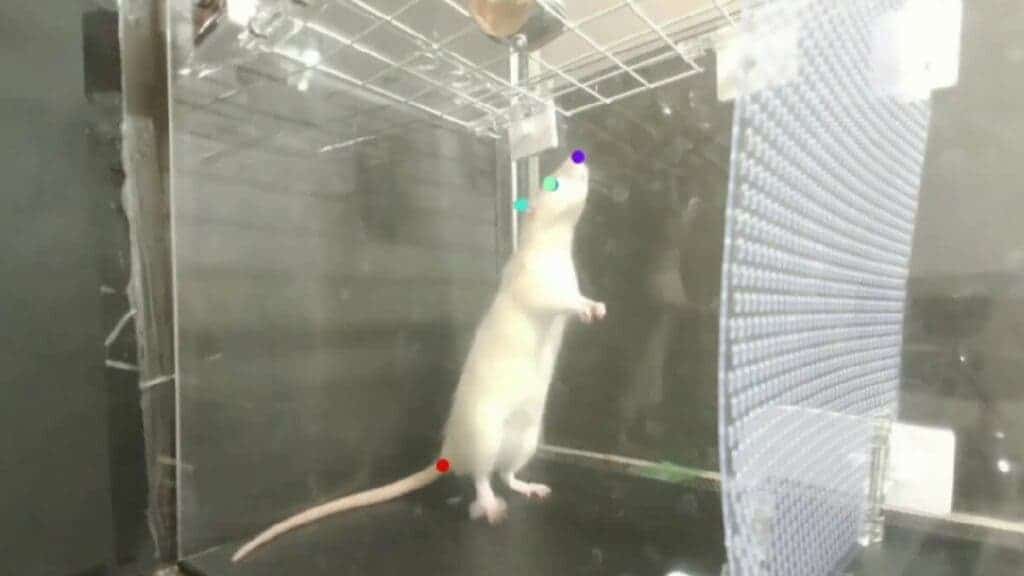We used to think the urge to groove to music was something uniquely human. But we were wrong. A new study that offers a fascinating glimpse into the mind of animals found that rats have an innate ability to sense and mimic the tempo of music. In other words, rats got rhythm — and it’s the first time this has ever been shown in animals.

Listen to a piece of music, or even just have it on the background, and your body may start to follow the tempo of it. Whether it’s your favorite tune or just something that sounds nice, it’s common to feel a groove and want to move with it, even if it’s just a subtle head bop. Holding a rhythm is a talent and some are better at it than others, but researchers have also confirmed that even people without any musical training have a sense of rhythm.
Animals also react to hearing noise and can be trained to respond to music, but this isn’t the same as recognizing and matching the beat to a song — something which is referred to as beat synchronicity. Researchers at the University of Tokyo wanted to see whether other animals (in this case, rats) also have beat synchronicity. So they played the animals some Mozart, Queen, and Lady Gaga.
The right tempo
Humans seem to like tempos in the 120-140 beats per minute (bpm) range. This type of beat also pops up in other things we do, including walking and applause. But it’s not clear whether all animals love this tempo range.
“Beat perception and synchronization within 120 to 140 beats/min (BPM) are common in humans and frequently used in music composition. Why beat synchronization is uncommon in some species and the mechanism determining the optimal tempo are unclear,” write the authors of the new study.
The researchers played the rats a few songs in this bpm range (Born This Way by Lady Gaga, Another One Bites the Dust by Queen, Beat It by Michael Jackson, and Sugar by Maroon 5). They also played one-minute excerpts from Mozart’s Sonata for Two Pianos in D Major, K. 448, at four different tempos: 75%, 100%, 200% and 400% of the original speed. Human participants also underwent a similar experiment.
To measure how rats were bopping to the music, the researchers equipped them with wireless, miniature accelerometers that tracked head movements.
“Rats displayed innate—that is, without any training or prior exposure to music—beat synchronization most distinctly within 120-140 bpm,” explained Associate Professor Hirokazu Takahashi from the Graduate School of Information Science and Technology. “To the best of our knowledge, this is the first report on innate beat synchronization in animals that was not achieved through training or musical exposure,” he added.
The Mozart mini experiment was particularly intriguing because it explored how rats reacted to different tempos. The original version of it is at 132 bpm and remarkably, this was also the version the rats responded most to. Basically, they seemed to react best to tunes in the 120-140 bpm, just like humans. This suggests that beat synchronization is determined by neural dynamics which is common across different species, and not things like physical size.
“We also hypothesized that short-term adaptation in the brain was involved in beat tuning in the auditory cortex. We were able to explain this by fitting our neural activity data to a mathematical model of the adaptation. Furthermore, our adaptation model showed that in response to random click sequences, the highest beat prediction performance occurred when the mean interstimulus interval (the time between the end of one stimulus and the start of another) was around 200 milliseconds (one-thousandth of a second). This matched the statistics of internote intervals in classical music, suggesting that the adaptation property in the brain underlies the perception and creation of music,” Takashi adds.
The findings are exciting not just because they show animals are more like us than previously thought, but also because they may show something that’s fundamental to the nature of music itself. For instance, it could be that music (or some parts of music like the beat or melody) relate to the dynamics of the brain or our neural pathways — and it could be that mammals or vertebrates in general have similar dynamics in this respect.
Understanding these processes and the interaction between music and our bodies could also pave the way for exciting new ways to generate music artificially.
“I believe that this question is the key to understand how the brain works and develop the next-generation AI (artificial intelligence). Also, as an engineer, I am interested in the use of music for a happy life.”
Journal Reference: Yoshiki Ito et al, Spontaneous beat synchronization in rats: Neural dynamics and motor entrainment, Science Advances (2022). DOI: 10.1126/sciadv.abo7019.



